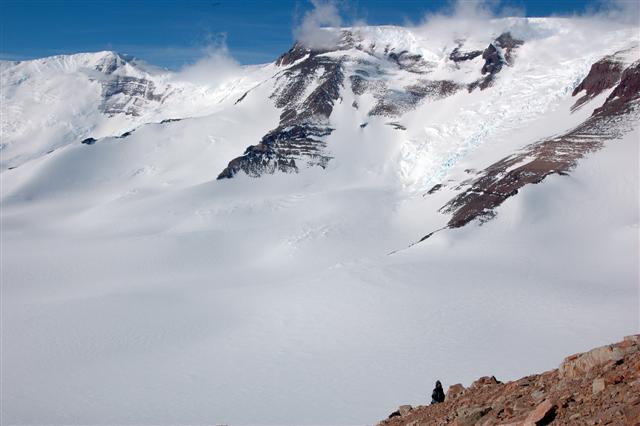|
Eye on the futureNRC panel recommends implementing Antarctic observation networkPosted October 7, 2011
Remote observatories generating gigabytes of data on the weather from Antarctica’s vast ice sheets, powered by nothing more than wind and sun. An array of buoys and gliders bobbing and cruising through the Southern Ocean. Satellites using ever more powerful sensors to peer through disintegrating ice shelves. It’s a possible vision from 20 years hence offered by a committee of scientists and experts tasked with identifying and summarizing future research priorities in the Antarctic. “We think the most important thing is climate change, and what’s going to happen to Antarctica,” said Dr. Warren Zapol In 2010, the National Science Foundation (NSF) The National Research Council (NRC) is part of the National Academies The recommendations from the 17-member committee, which included a Nobel prize-winning neurologist and numerous polar researchers, many with decades of Antarctic experience, will be handed off to a second panel led by Norm Augustine List of NRC Committee Future Priorities
The Blue Ribbon panel headed by Augustine will examine the logistics side of the U.S. Antarctic Program to determine, among other things, how the research priorities from the NRC committee might affect future logistical needs. [See related article: Planning for the future.] Augustine led a similar panel review in 1997 that helped garner congressional support for construction of a new research station at the geographic South Pole “I think it is fair to say that the committee conducted a very thorough study of scientific trends in Antarctic research. [It] was very thoughtful in posing some of the key questions about the nature of the research that will drive Antarctic science in the coming decades,” said Scott Borg, Antarctic Sciences Division Scientists have conducted continuous research in the Antarctic since the 1950s, making numerous discoveries about the continent, the planet and beyond over the decades. For example, researchers have discovered how dynamically the continent’s ice sheets can change from studying its past behavior though ice- and sediment-core records, as well as real-time observations from satellites and aircraft. The research is important for understanding how Antarctica, which holds about 90 percent of the world’s ice, will contribute to sea-level rise in the coming centuries. The committee’s report balances its recommendations between big-picture science that focuses on the Antarctic’s role in global processes and pioneering research for discovery’s sake. “These will be the important drivers for the next 20 years,” said Robin Bell Bell led a team during the 2007-09 International Polar Year Topping the list of scientific questions identified by the NRC panel in the coming years: How will Antarctica’s vast ice sheets contribute to changes in global sea level? Researchers have already detected profound changes in the marine-based West Antarctic Ice Sheet, while changes in the larger East Antarctic Ice Sheet have been more difficult to quantify.1 2 Next |



For USAP Participants |
For The Public |
For Researchers and EducatorsContact UsU.S. National Science FoundationOffice of Polar Programs Geosciences Directorate 2415 Eisenhower Avenue, Suite W7100 Alexandria, VA 22314 Sign up for the NSF Office of Polar Programs newsletter and events. Feedback Form |


